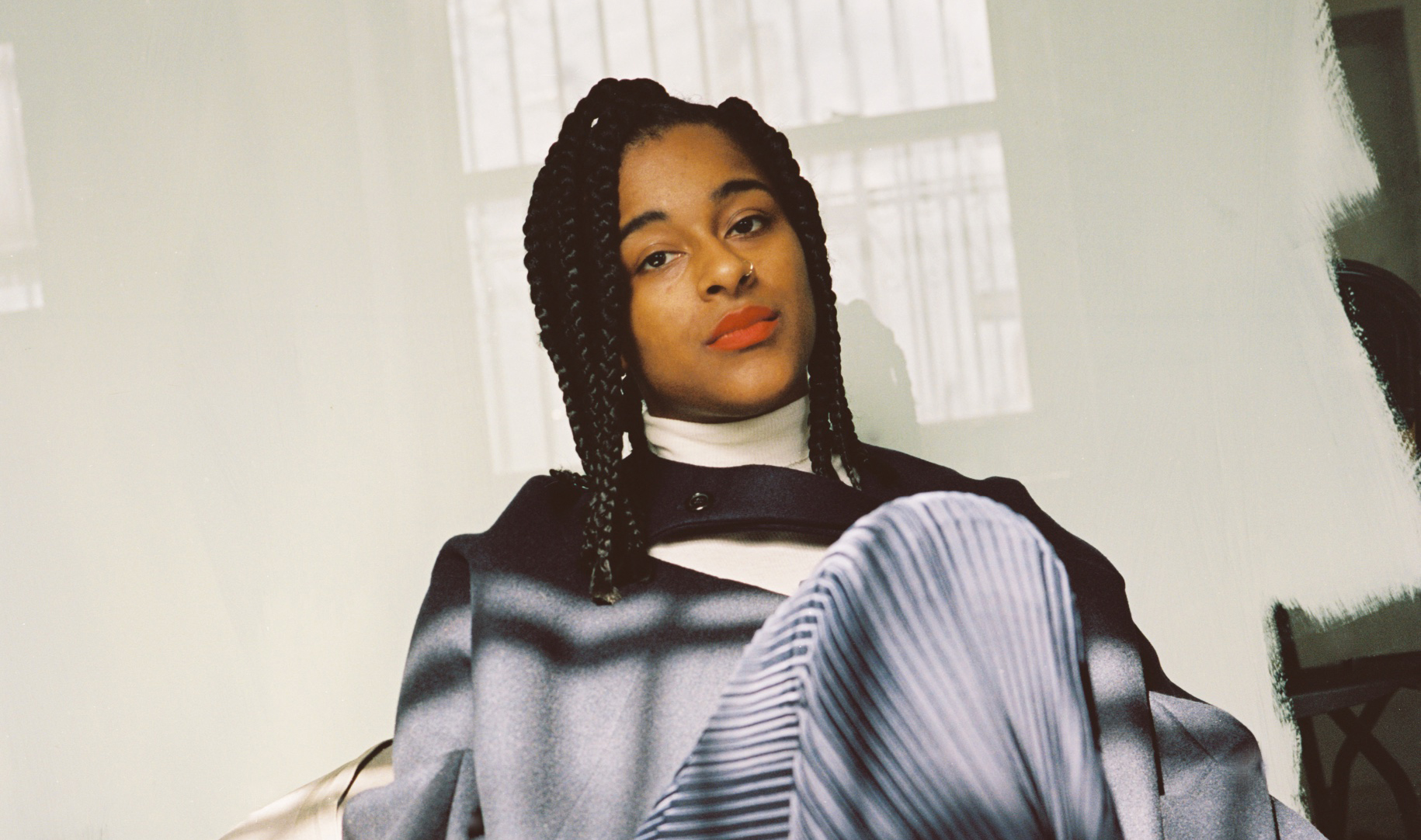We met self-described curious outsider, ally, facilitator, and practitioner Taja Cheek – Curatorial Assistant at New York's MoMA PS1 – and spoke about art, noise and the changing/unchanging states of NYC.
Art Matters
Taja Cheek
We met self-described curious outsider, ally, facilitator, and practitioner Taja Cheek – Curatorial Assistant at New York's MoMA PS1 – and spoke about art, noise and the changing/unchanging states of NYC.
| CONTRIBUTORS | |
| Photos: June Canedo | Stylist: Tess Herbert |
| Interview: Nate Budzinski | |
You grew up in New York – how has the city changed in your lifetime – culturally, socially? Especially now that so much of the world is turning inwards, global cities like NY, London, Berlin increasingly seem like separate worlds, feudal cultural fortresses compared to the interior national landscape/mindscape of different states.
Noting change is a daily practice as a Brooklynite. But, instead of passively noting what is different in my neighbourhood, I am trying to actively notice what stays the same. I think there is a tendency to try to hyperbolize the uniqueness of the danger latent in this present moment. While there is some truth there , I think it can be dangerous to ignore or forget the precedents of gentrification, for example, especially because our framing of this present will influence how we interpret this moment years into the future. This city has many histories of radical change and population upheaval, evident in the name of the borough of Manhattan itself.
The euphemism of “change” is complicated. Is it a useful reflection of the everydayness of gentrification, or does it obscure its violence? The word is related to the roots of “barter,” which is an interesting thought experiment: when neighbourhoods change what is being exchanged beyond capital? What traces and remnants are left when people leave their neighbourhoods, especially when they are forced to leave?
I often hear people say, especially about New York, that the cultural underground has disappeared. It’s true that it’s become increasingly more difficult for artists to sustain themselves here, spiritually and financially. But, I think and hope there is still a foil to the hyper-visible mainstream, IRL and online. If New York is too expensive, too corporate, and too policed, then there must be an underbelly of the city built to resist these conditions, created and sustained by those who aren’t explicitly welcome here, but also aren’t able to migrate elsewhere. The myth of the disappearance of the underground seems to stem in part from an egalitarian view of the internet and media in general – systems that presume to catch all, see all, and remain open to everyone. “If you can’t Google it, it doesn’t exist.” But, I am constantly reminded that interfaces, software, and the internet itself, are not universal systems; they’re designed by humans with their own biases and predilections. I try to assume that there are people all over the city creating exciting, relevant work that I know nothing about; we all should develop better ways of finding and supporting these artists.
““If New York is too expensive, too corporate, and too policed, then there must be an underbelly of the city built to resist these conditions, created and sustained by those who aren’t explicitly welcome here...””
Tell us how you got interested in culture; art and noise music specifically? Was there a eureka moment or did it happen slowly?
I was young when the Sensation exhibit was on view at the Brooklyn Museum, but I remember it vividly. I’d been to the Brooklyn Museum many times before, but I was suddenly awoken to fundamental questions about the nature of art itself. Trite maybe, but important and new to me at that time: what is art? Who is allowed to police what it is and isn’t? What is the role of the “State”?
My interest in noise was sparked in high school and probably blossomed from my innocence, to be honest. I didn’t have a fake ID, so DIY spaces were the only venues I could get into. Many shows in those spaces were on the punkier, noisier end of the spectrum and I was especially excited by the music scenes in Baltimore and the noise scene in Rhode Island. I would always try to see bands from those communities when they came into town. I also played classical piano and cello for many years; learning about the trajectory of art music and testing its limits (atonal music, free jazz, extended technique, prepared instruments, etc.) was an important precursor to understanding noise music outside of the canon.
Noise is one of the most distinct yet fluid scenes/genres/approaches in music – hard to define but always somewhere in the background of all culture: tell us how you fit into that (or how you don’t)?
Noise exists in a weird, liminal space. I gravitate towards it because it can be both heady and visceral: Annie Gosfield composing music from factory sounds, or Mica Levi using a vacuum as an instrument, or the rattling of a Shona mbira, or a set by Dreamcrusher in a basement, or at MoMA PS1, or ATM in Philly, or “some guy” dressed in all black screaming into a microphone to an audience of two people, etc. Those two modalities of thinking about noise are palpable but also totally confusing. I’m not sure which of those examples are heady and which are visceral; that illegibility is exciting to me.
Though, as often as noise is positioned as a resistance to mainstream aesthetics and consumption, the reality is often a culture of “noise bros” and the homogeneity of some noise scenes can be alienating. The utopian view of noise is sometimes valid, but in general I hope for more and support of and visibility for queer and femme noise musicians of color--especially as interest in the intersection of electronic music, dance music, and noise continues to grow.
I’m not entirely sure where I fit in here. I am probably some mix between curious outsider, ally, facilitator, and practitioner. This past year, I’ve hosted a couple of queer noise and drag noise shows. The organizers and artists involved in those projects are creating a beautiful communities based around important work.
Tell us about the DIY spaces and scenes you’ve worked with, and how they are important in a city like NY?
I used to frequent the popular Williamsburg DIY spaces that many Brooklyn kids went to in the early 00’s. But, as much as I relied on those spaces, the only all-ages venues in the city that I knew of, I didn’t feel particularly welcome there. I always wanted to be more deeply involved in those scenes and never really found my way. Recently though, I co-operated a DIY space in Chelsea, strangely enough, and I now co-host experimental/noise shows in my neighbourhood. (Post-Ghost Ship it’s a little too risky to mention addresses or even names). A friend once called those shows an “experiment in radical empathy.” Unearned adjective aside, the space is modest but communal – people keep keys and float in whenever they’re free during the week. I once met a young black woman there who was still in school and somehow found out about one of these shows online. She showed up alone, not knowing anyone, very new to the noise and experimental scenes in the city. As she was leaving, she told me that she was thankful for the show and the space, and that she’d met people and learned a lot in the hours that she spent there. I hope everything I do can be defined by simple profound experiences like that one.








